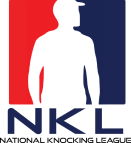Think of it: A fresh-faced rep squares their shoulders at 8 AM, heart pounding like they’ve just been told the boss is watching every knock. Meanwhile, at house number seven, your veteran closer yawns through an approach they’ve done a thousand times. Both scenarios share one truth—door-to-door sales rewards precision over improvisation.
That’s where the Importance of Sales Training comes into play. Investing in targeted training not only guards your bottom line but supercharges morale, tightens your messaging, and turns every rep into a revenue engine.
What you’ll learn
- Why sales training matters now more than ever
- Key areas where training delivers the biggest impact
- Risks of leaving reps to “wing it”
- Answers to top training FAQs
What Makes Sales Training Critical?
Adapting to evolving buyer behavior
Homeowners aren’t waiting for you to sell them; they’re selling themselves on Google first. HubSpot reports that 96 percent of prospects research a product before ever speaking to a rep, so your opener needs to prove you’ve done your homework. In our Sales Bootcamp, we train reps to surface hyper-relevant insights—citing neighborhood reviews, referencing recent permit trends, even weaving in local case studies—so that every conversation feels tailored, informed, and instantly credible rather than scripted.
Reducing costly sales mistakes
Skipping structured training leaves cash on the curb. A Qwilr study found every dollar invested returns $4.53—a 353 percent ROI—with the average company spending just $2,000 per rep each year. That makes sales training one of the highest-leverage line items in your budget.
Ensuring consistent messaging across the team
Consistency builds trust. At Door-to-Door University, every rep follows the same proven framework for intros, discovery questions, and closes—so prospects always hear a unified brand voice, no matter who knocks. This level of consistency highlights the Importance of Sales Training in creating a reliable, professional experience at every doorstep.
Building resilience and persistence in sales reps
Rejection fatigue is real. In our role-play workshops, reps face rapid-fire “doors” and debriefs that teach them to recover and iterate instantly. This approach mirrors findings that teams with structured coaching see up to 28 percent higher win rates.
Areas Where Sales Training Makes a Difference
Prospecting and lead generation
Effective route mapping and warm-door stacking can boost first-knock success by over 20 percent. In our sales bootcamp, microlearning modules teach reps to analyze neighborhood demographics, prioritize high-value streets, and automate CRM updates on the go.
Consultative selling techniques
Move from feature-dumping to insight-driven conversations. Training in active listening and problem framing follows the “Feel–Felt–Found” method, proven to increase objection-conversion rates by 64 percent.⁴ We reinforce these skills with peer-reviewed call recordings and scenario-based quizzes—practical sales training tips that reps can apply instantly in the field.
Closing strategies and negotiation
A unified script is trust insurance. When every rep follows the same proven framework for their opener, discovery questions, and closing ask, they hit quota 73 percent of the time. That consistency does more than boost conversions—it turns your whole team into a seamless brand ambassador squad. Prospects hear the same confident message at every doorstep, which removes confusion and builds credibility instantly. Managers gain a clear coaching lens, pinpointing exactly where someone drifts off-script and can step in with targeted feedback. Plus, new hires ramp up faster when they learn a single, battle-tested process, and your reputation for reliability sticks long after the door shuts.
This is another clear example of the Importance of Sales Training. It ensures every rep speaks the same language, applies the same high-impact strategies, and represents your brand with consistency and confidence—every single time.
Upselling and cross-selling opportunities
When reps uncover true customer pain, adding accessories or service plans feels natural.
The Risk of Skipping Sales Training
Stagnant or declining sales
HireDNA reports that untrained teams underperform by 57 percent on core metrics.
High turnover of sales staff
Without proper onboarding, reps leave within months. Organizations that pair training with mentorship cut turnover from 34 percent to 11.9 percent.
Read Also “how to handle rejection in sales“
Damage to brand image through poor selling
A single off-script pitch can spark negative word-of-mouth across neighborhoods and social media. The benefits of sales training include message consistency, improved professionalism, and stronger rapport—ensuring reps leave prospects thanking them, not griping online.
| Metric | Without Training | With Training | Source |
| Win rate | 40 % | 52.6 % | hyperbound.ai |
| ROI | — | 353 % | qwilr.com |
| Rep turnover | 34 % | 11.9 % | hiredna.com |
| Income per employee | Baseline | +218 % | qwilr.com |
Final Words
Training isn’t a line-item expense—it’s the engine that powers every successful knock. The Importance of Sales Training lies in equipping your team with focused drills, unified playbooks, and ongoing coaching. Do that, and you’ll watch inconsistent days turn into record-breaking months.
Schedule a call and let D2D Experts build your custom Sales Bootcamp.
FAQs
How does sales training help reduce turnover in sales teams?
Structured onboarding and clear career paths boost engagement and loyalty.
Can sales training improve team consistency in messaging?
Yes. Shared frameworks and live call reviews align every rep with your brand voice.
What skills are typically developed through sales training?
Prospecting, consultative selling, objection handling, negotiation, and territory planning.
Is sales training still important for experienced salespeople?
Absolutely. Ongoing coaching prevents plateauing and keeps skills sharp.
How can sales training help with upselling and cross-selling?
Discovery drills teach reps to surface hidden needs, making premium offers feel earned.
What are some signs that a business needs sales training?
Flat close rates, frequent rep turnover, and large performance gaps between team members.
Does remote or online sales training deliver the same value as in-person training?
A blend of micro-lessons plus live role-plays delivers the best of both worlds.
How does sales training contribute to better lead generation?
Reps learn data-driven territory mapping and optimized follow-up cadences that multiply touches.
Can sales training help align sales and marketing teams?
Yes. Unified playbooks and shared KPIs foster collaboration and smoother hand-offs.
What role does sales training play in building resilience among sales reps?
Regular simulations normalize rejection and teach fast recovery, so reps bounce back stronger.
I knocked doors since I was 11! Never bought into the whole hourly normal job, and used direct sales to be the vehicle to create MASSIVE success. I Started the Direct Sales division for Solcius as their VP building it up to have 70+ sales reps nation wide. In 2018 I left to pursue a greater mission to unify and uplevel the Door to Door industry and founded the D2D Experts.























